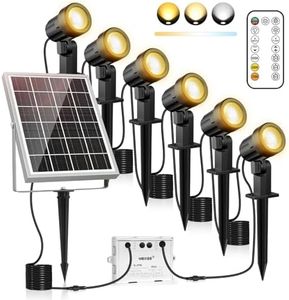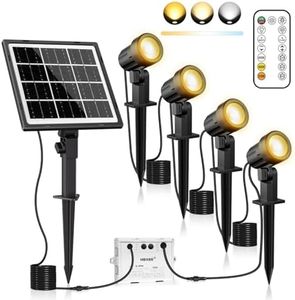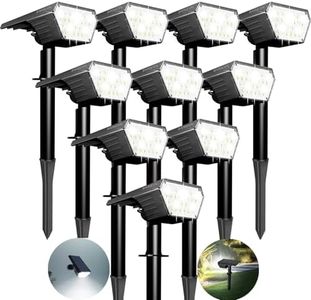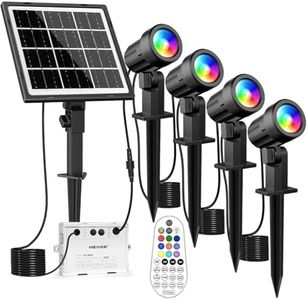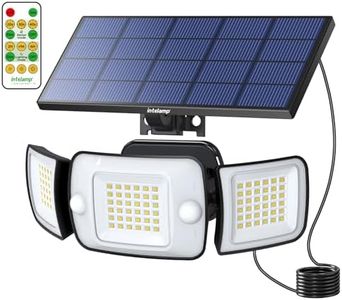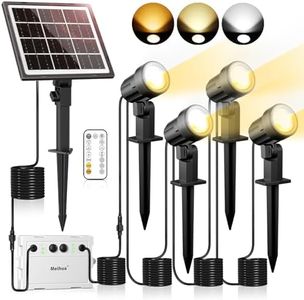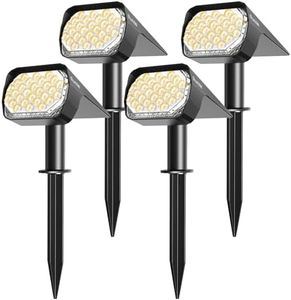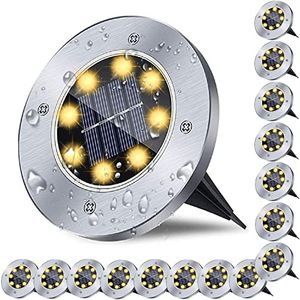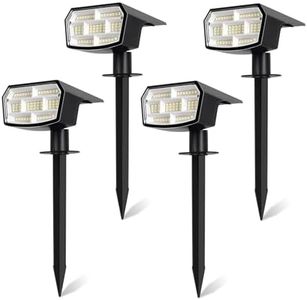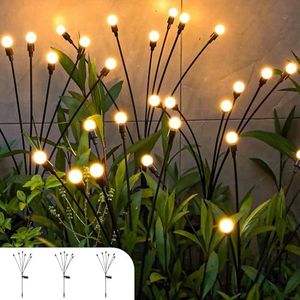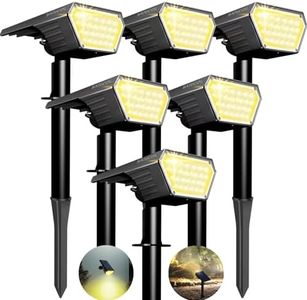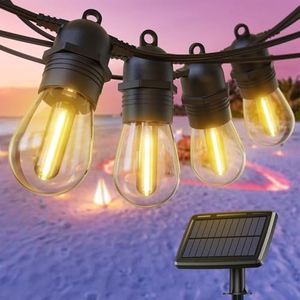We Use CookiesWe use cookies to enhance the security, performance,
functionality and for analytical and promotional activities. By continuing to browse this site you
are agreeing to our privacy policy
10 Best Garden Solar Lighting
From leading brands and best sellers available on the web.Buying Guide for the Best Garden Solar Lighting
Choosing the right garden solar lighting can make your outdoor space both more beautiful and functional, saving energy and reducing maintenance at the same time. The goal is to understand your lighting needs—whether it’s adding ambience, improving safety along walkways, or highlighting specific features. By learning about the key specs, you can select a solar lighting set that fits your garden’s unique requirements.Brightness (Lumens)Brightness, measured in lumens, tells you how much light the solar lantern or fixture will give off. This spec is crucial because it determines whether the light will be soft and decorative, or strong enough to illuminate a path or large area. Low lumens (10-50 lm) are good for accent lighting or gentle glows, medium levels (50-150 lm) work for pathways or steps, and higher values (around 150 lm and up) are more suited for security lighting or larger spaces. If you need subtle mood lighting, go for the lower lumens; for tasks like walking at night or added safety, higher lumens are better.
Battery Capacity and TypeThis refers to how much energy the solar light can store during the day and what kind of battery is used. It affects how long your lights will run at night. Battery capacities are typically measured in milliamp hours (mAh): smaller batteries (400-800 mAh) usually provide a few hours of light, while larger ones (1000 mAh and up) can last through the night. Choose based on whether you want the lights for a few evening hours, or need coverage all night long. Battery type (such as Ni-MH, Li-ion) matters mainly for lifespan and performance—look for reputable battery types for greater reliability.
Solar Panel EfficiencyThe solar panel collects sunlight to recharge the battery. Higher efficiency panels convert more sunlight into energy, letting your lights shine longer even on cloudy days. Small, basic lights may have lower-efficiency panels and need direct sun, while higher efficiency options work better in partial shade or shorter winter days. Choose higher efficiency if your garden doesn’t get full sun all day, or you live in a less sunny climate.
Weather Resistance (IP Rating)Garden solar lights are exposed to rain, dust, and temperature changes, so their resistance to the elements is key. The IP (Ingress Protection) rating describes how well the light withstands dust and moisture. An IP44 rating resists splashing water and is fine for sheltered areas, IP65 or higher is better for full exposure to rain and dust. Pick a rating that matches your local weather and where you’ll install the lights.
Lighting Modes and ControlsMany solar lights have multiple settings, like steady, flashing, or motion-activated modes. This versatility can be useful: motion sensing boosts security and saves power, while steady or decorative modes suit different garden moods. Some lights have manual on/off switches, but most are automatic and turn on at dusk. Consider your preference for convenience, security, or ambience when looking at lighting controls.
Installation Type and DesignSolar lights come in various installation styles such as stakes to push into the ground, wall-mounts, or hanging lanterns. Each type suits different garden layouts and decoration tastes. Stakes are great for pathways, wall-mounted styles suit entrances or fences, while hanging lights add charm to trees or pergolas. Think about where and how you want to use the lights, as this will determine the best mounting and design options for you.
